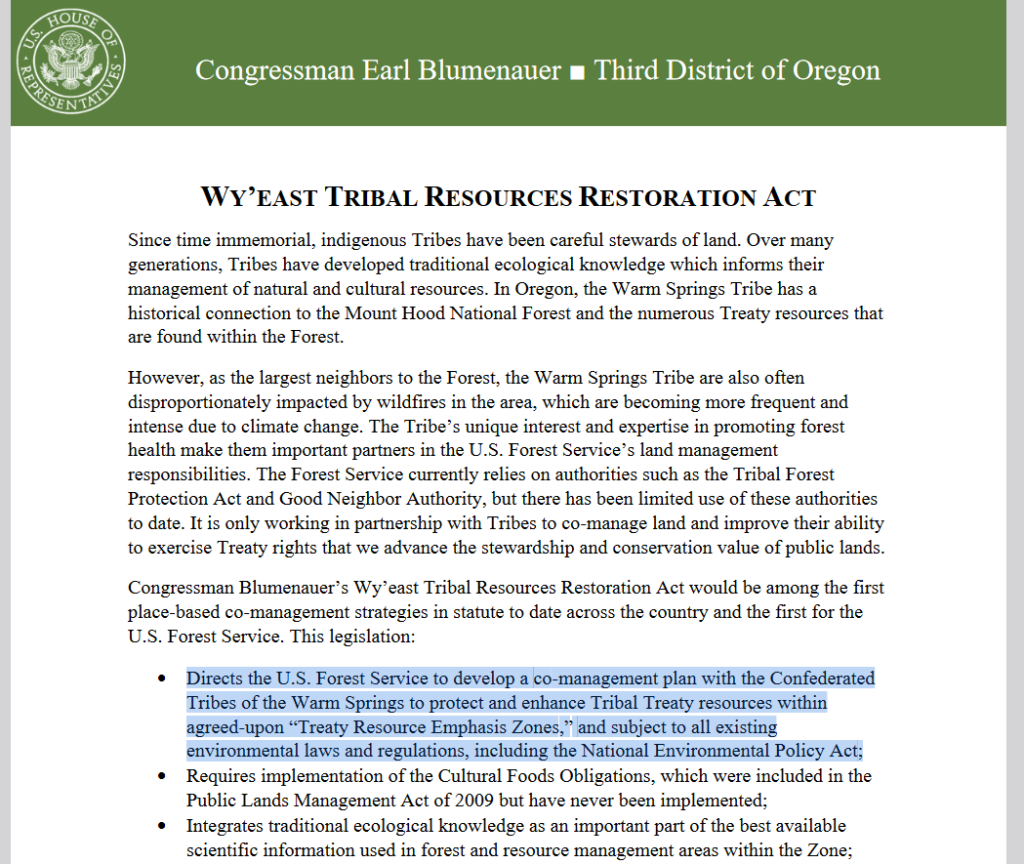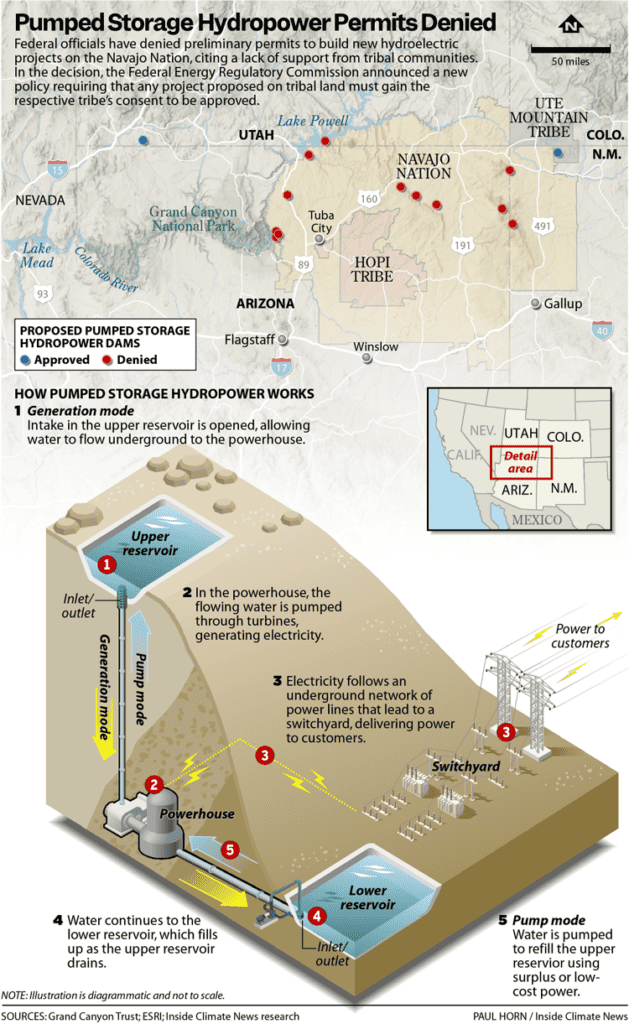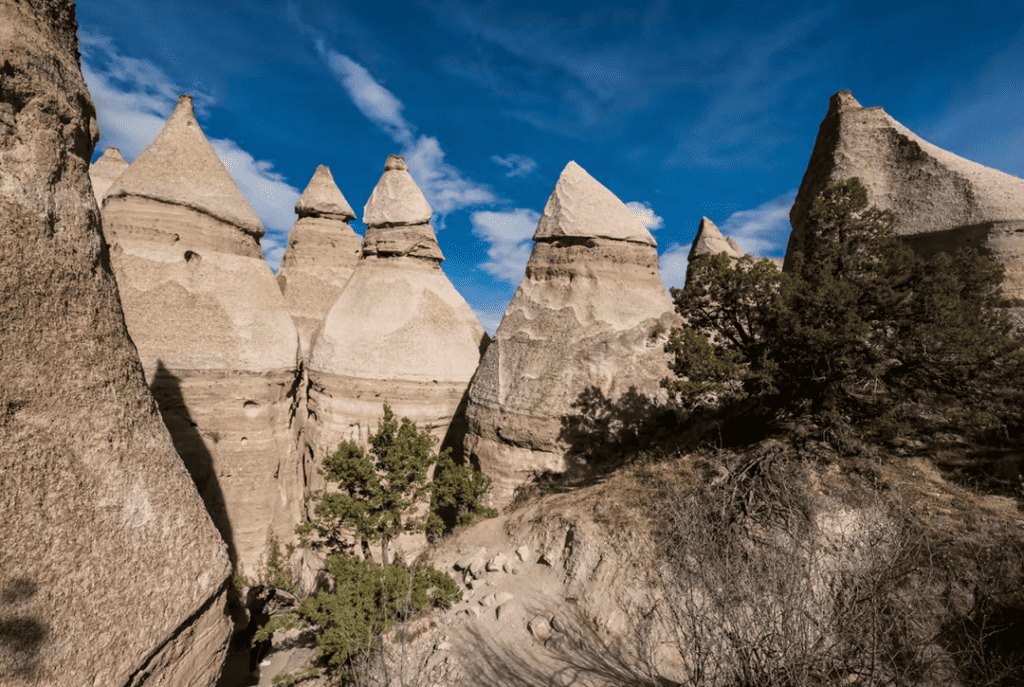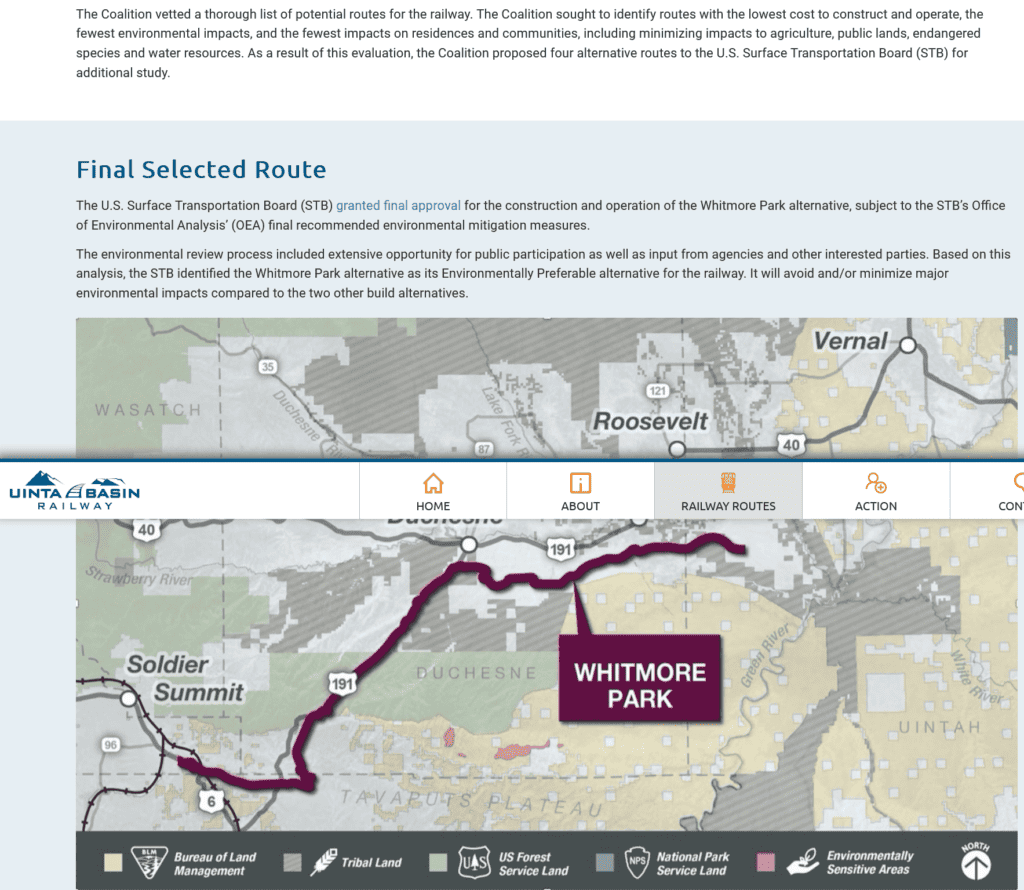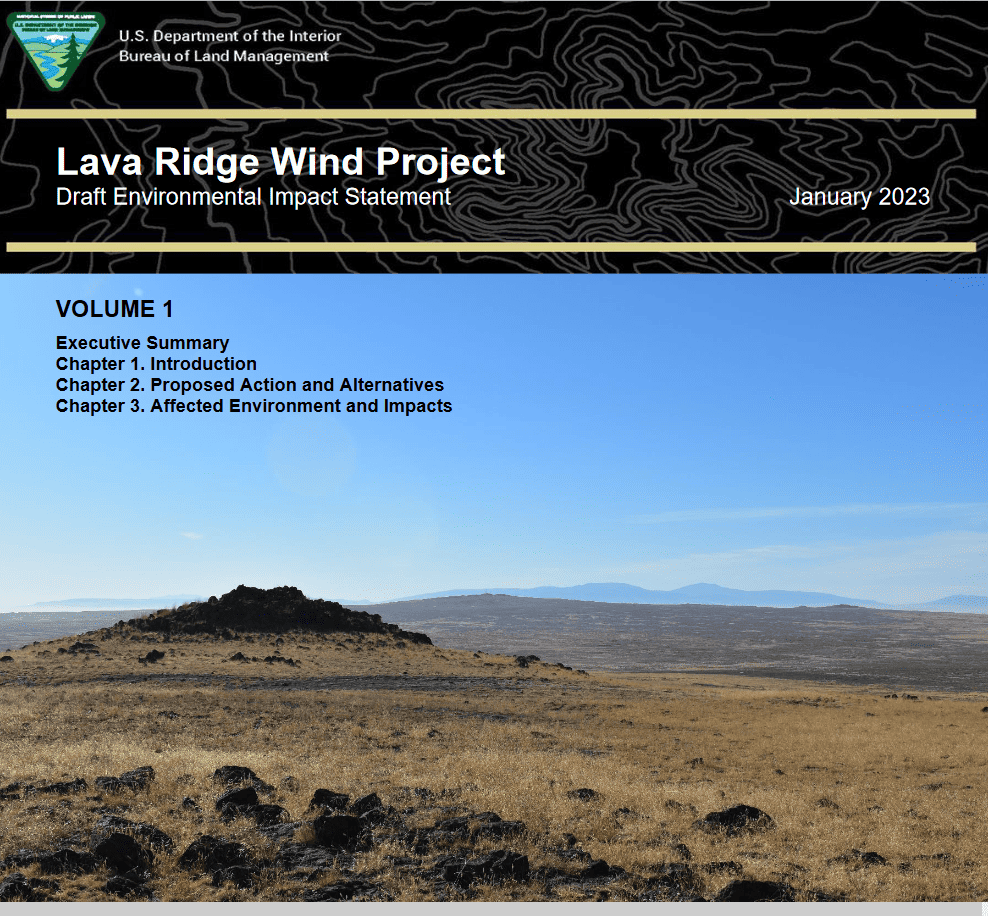Inquiring minds might wonder why there has been only limited use of TFPA and GNA in this area, compared to other places, and how (or if) this bill would help that (other than providing funding?)
**************************
Jon posted this news story in a comment yesterday, and I think it’s innovative enough to deserve its own post. We’ve talked about what “co-management” means, and how it’s interpreted. I think we have to look very specifically at what is meant. Let’s develop a range of options- these are just some. Talking more? Sharing information? Using traditional ecological knowledge? Prioritizing projects of interest to Tribes? Giving Tribes’ views on management priority over other members of the public? Giving projects supported by Tribes some relief from litigation? Giving Tribes a seat at the table during legal settlements involving projects of concern? Conceivably, 1, 2, 3 and 4 are called co-stewardship, and all Forests (and the BLM) are supposed to be doing those, and they don’t require specific treaty rights or specific legislation.
WASHINGTON (KTVZ) — Rep. Earl Blumenauer and Senator Ron Wyden, along with Senator Jeff Merkley, reintroduced the Wy’east Tribal Resources Restoration Act. The legislation directs the U.S. Forest Service to partner with the Confederated Tribes of the Warm Springs to develop a co-management plan for agreed-upon Treaty Resource Emphasis Zones.
The legislation would establish one of the first placed-based co-management strategies in the nation.
It was introduced last Congress, and had a hearing in the Senate Committee on Energy and Natural Resources.
“Indigenous communities have been responsible stewards of Oregon’s lands and wildlife since time immemorial. We must do more to capitalize on their leadership in our conservation efforts—not just because the federal government has a moral obligation to do so but because we will not be successful without them,” said Blumenauer. “Tribal co-stewardship represents 21st?century public lands management.”
“The Confederated Tribes of Warm Springs have generations-long knowledge of best ecological practices and treaty rights with the federal government that must be protected,” Wyden said. “This legislation would secure both goals in the Mount Hood National Forest by giving the Tribe an important voice and role in the management of its precious cultural resources.”
“The Confederated Tribes of Warm Springs are the largest neighbor to the Mt. Hood National Forest and are essential in maintaining and protecting the region’s cultural and ecological resources,” said Senator Jeff Merkley. “This legislation is a critical step in fulfilling our treaty and trust responsibilities to the Warm Springs community by creating a framework for them to take an active role in co-managing the forest and utilizing their knowledge, traditions, and expertise to improve forest management.”
The Wy’east Tribal Resources Restoration Act:
· Directs the U.S. Forest Service to develop a co-management plan with the Confederated Tribes of the Warm Springs to protect and enhance Tribal Treaty resources and protect the Reservation from wildfire within agreed-upon “Treaty Resources Emphasis Zones.” These zones are areas within the Mount Hood National Forest subject to the Warm Springs-Forest Service co-management plan;
* Requires implementation of the Cultural Foods Obligations, which were included in the Public Lands Management Act of 2009 but have never been implemented;
· Integrates traditional ecological knowledge as an important part of the best available scientific information used in forest and resource management areas within the Zone;
· Authorizes $3,500,000 in annual appropriations and the use of existing Forest Service revenue to ensure the Tribe is a full participant in management.
Click here for bill text. Click here for a one-page fact sheet.
“We are grateful to Rep. Blumenauer and Senator Wyden for this legislation. Warm Springs people have cared for the land since the Creator placed us here, and this legislation will help reconnect Wy’east to its original inhabitants and integrate traditional ecological knowledge into federal land management. The bill would allow the Warm Springs Tribe to improve fish and wildlife habitat, reduce forest fuels and wildfire risk in the borderlands of our Reservation — an area designated as a priority fireshed by the U.S. Forest Service.? The result will improve forest and wildlife health for the benefit of all Oregonians,” said Warm Springs Chairman Jonathan Smith.
Note that all the folks quoted, except for Sustainable Northwest, are all recreation outfits of various kinds.
I thought that this was interesting, it seems to relate to the Zones of co-management and echoes the 2001 Roadless Rule (except off the top of my head the RR did not have the language “promote fire resilient stands.”
(C) include requirements that no temporary or permanent road shall be constructed within a Zone, except as necessary
‘‘(i) to meet the requirements for the administration of a Zone;
‘‘(ii) to protect public health and safety;
‘‘(iii) to respond to an emergency;
‘‘(iv) for the control of fire, insects, diseases, subject to such terms and conditions as the Secretary determines to be appropriate; and
‘‘(D) to the maximum extent practicable, to meet the purposes of this section, provide for the retention of large trees, as appropriate for the historic forest structure or promotion of fire-resilient stands.
Maybe I’m reading this wrong, but it sounds like the intention is to have specific areas on the Forest to be co-managed for various reasons including wildfire resilience, without temporary roads. Which doesn’t really seem like co-management, suppose the Tribe wants to move material offsite for whatever reason? It seems like co-management within parameters the politicians have decided with the same analysis and litigation processes as currently exist. So what’s the advantage to the Tribe, or to the taxpayer other than more discussion and integrating TEK (everyone’s supposed to do that), and for which a statute is not needed? Actually it seems more restrictive to wildfire resilience than the current situation, based on the roadless-like requirements, so that’s puzzling.
Finally, I guess another question, perhaps more philosophical, is “suppose Tribes’ ecological knowledge is that temp roads are useful”? Maybe it’s not Traditional, but then who decides? Seems like sovereignty would say that Tribal views and knowledge are important, no matter what over what time frame this knowledge was developed. Here’s a USFWS definition of TEK.
Traditional Ecological Knowledge, also called by other names including Indigenous Knowledge or Native Science, (hereafter, TEK) refers to the evolving knowledge acquired by indigenous and local peoples over hundreds or thousands of years through direct contact with the environment. This knowledge is specific to a location and includes the relationships between plants, animals, natural phenomena, landscapes and timing of events that are used for lifeways, including but not limited to hunting, fishing, trapping, agriculture, and forestry.
There might be an implicit colonizer bias here that Indigenous knowledge stopped being valuable when immigrants shared new technologies. Like other humans, Tribal folks adapt new ideas and technologies that work for them- in ways that might be different from the technologies as introduced. Think horses, woodstoves, and temp roads. What would a court case look like in which a Tribe argued that temp roads, done their way, used the best available science based on Current Indigenous Ecological Knowledge?
Anyway, I could have gotten this wrong, and I realize that there is a theatrical element to proposed legislation, so would appreciate thoughts of folks who know more.
